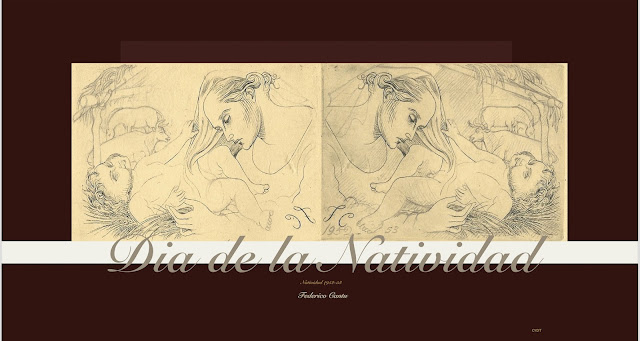
Feliz Navidad Federico Cantú 1907-1989 Natividad 1952-53 Grabado al buri lColección de arte Cantú Y de Teresa La Navidad (en latín nativitas, «nacimiento») es una de las festividades más importantes del cristianismo, junto con la Pascua de resurrección y Pentecostés. Esta solemnidad, que conmemora el nacimiento de Jesucristo en Belén, se celebra el 25 de diciembre en la Iglesia católica, en la Iglesia anglicana, en algunas comunidades protestantes y en la mayoría de las Iglesias ortodoxas. En algunas de estas tradiciones también el 24, la Nochebuena (en inglés, Christmas Eve; en alemán, Heiligabend o Heiliger Abend) y el 26 (Second day of Christmas, zweiter Weihnachtsfeiertag o Stephanstag) son partes importantes de la fiesta de Navidad. Federico Cantú trabajo el tema de la natividad en diferentes versiones y épocas! , por ejemplo esta versión donde aparece la virgen y el niño en el pesebre fue concebida para placa de cobre grabada al buril en la navidad de 1952 , sin embargo fue...


